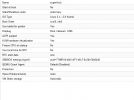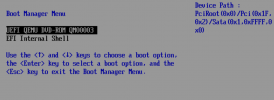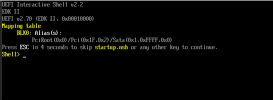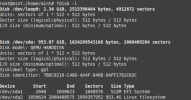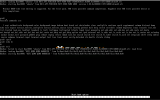I created a new virtual machine on proxmox using OMVF for UEFI support for my Arch Linux install, after finishing setup I shutdown the VM, detached the CD/ROM drive, and used "qm set <VMID> -efidisk0 /dev/disk/by-id/<DISKID-PART#-OFEFI>,efitype=4m,format=raw" followed by "qm set <VMID> -scsi0 /dev/disk/by-id/<DISKID>" once I attempted to boot my VM I just got such with "Guest has not initialized display(yet)." The same thing happened on a physical drive passthrough of a Linux Mint install. I know it's the EFI disk that's tripping it up. The VM doesn't boot without "format" being set and the only thing I can set it to is raw which causes the issues. I have tried switching between q35 and the default, allocating GPU memory, setting EFI to not use a specific partition, changing OS type, and a few other things. I'm not sure what I'm doing wrong or what may be causing this but tried for a long time to fix this before asking on forum.
VM config as follows:
bios: ovmf
boot: order=scsi0
cores: 4
efidisk0: /dev/disk/by-id/ata-PNY_CS900_500GB_SSD_PNY2244221104010144E,efitype=4m,format=raw,size=488386584K
localtime: 0
machine: q35
memory: 4096
meta: creation-qemu=7.1.0,ctime=1674860461
name: superArch
numa: 0
ostype: l26
scsi0: /dev/disk/by-id/ata-PNY_CS900_500GB_SSD_PNY2244221104010144E,size=488386584K
smbios1: uuid=77df691b-4fa5-4f71-a6c7-0c20e74b6440
sockets: 1
vmgenid: c84736d5-87f9-433a-8863-6763b9cf99ad
VM config as follows:
bios: ovmf
boot: order=scsi0
cores: 4
efidisk0: /dev/disk/by-id/ata-PNY_CS900_500GB_SSD_PNY2244221104010144E,efitype=4m,format=raw,size=488386584K
localtime: 0
machine: q35
memory: 4096
meta: creation-qemu=7.1.0,ctime=1674860461
name: superArch
numa: 0
ostype: l26
scsi0: /dev/disk/by-id/ata-PNY_CS900_500GB_SSD_PNY2244221104010144E,size=488386584K
smbios1: uuid=77df691b-4fa5-4f71-a6c7-0c20e74b6440
sockets: 1
vmgenid: c84736d5-87f9-433a-8863-6763b9cf99ad


